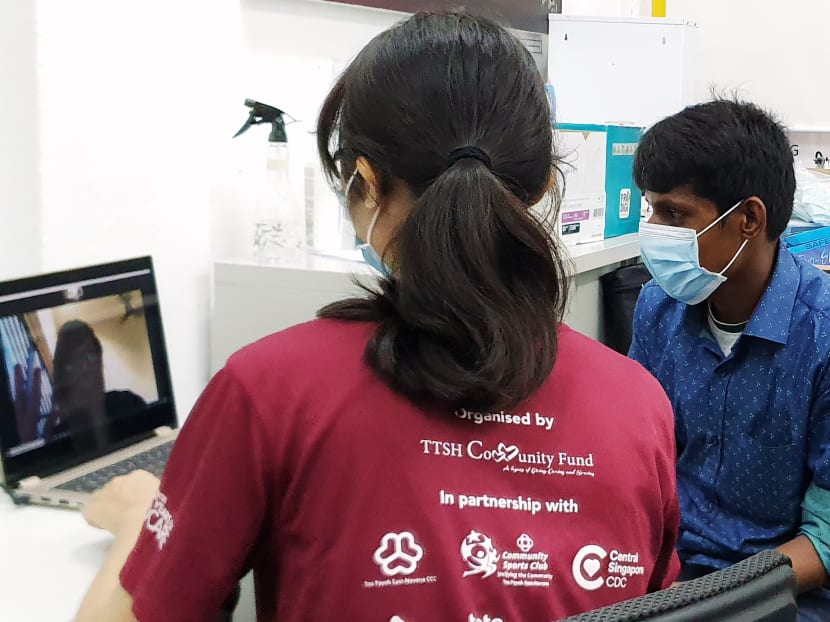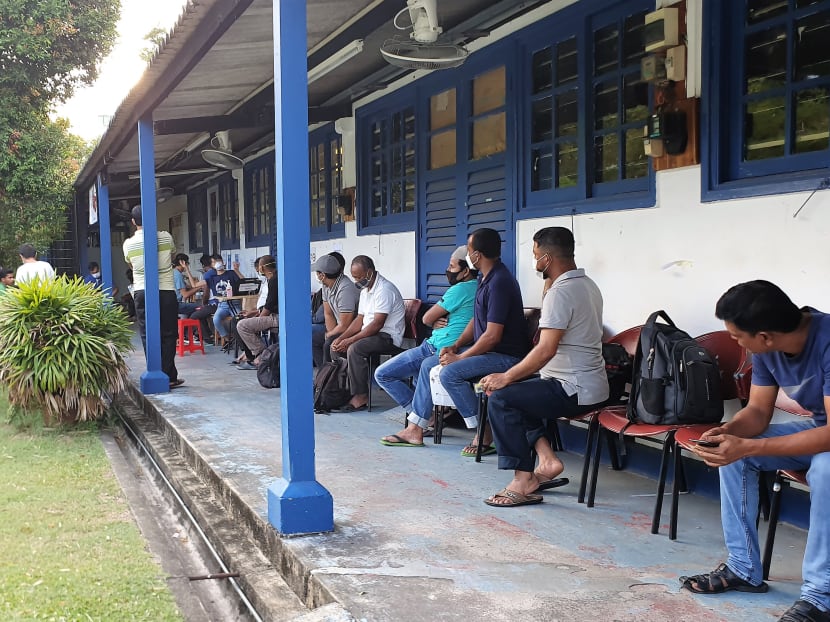Covid-19: Sharp decline in volunteers for non-profit clinic, but migrant workers have reason for cheer
SINGAPORE — He had a steel plate inserted in his finger after sustaining an injury at work late last year. But Jian, a construction worker from China, was told by his doctor that he could return to work the following day, despite the fact that he could barely move his hand.
SINGAPORE — He had a steel plate inserted in his finger after sustaining an injury at work late last year. But Jian, a construction worker from China, was told by his doctor that he could return to work the following day, despite the fact that he could barely move his hand.
The 34-year-old sought a second opinion at Healthserve — the largest non-profit clinic in Singapore that serves the migrant community.
He was sent to a specialist who taught him how to do simple physiotherapy exercises, was given medication and had his wound dressings changed — all for free, since he had no income from his prolonged medical leave.
Healthserve has been a godsend for migrant workers since its inception in 2006, providing them with subsidised medical and dental services at its three clinics every month. Patients pay a flat rate of S$8 for consultation, medication and injections.
However, the charity organisation had to halt operations at two of its clinics in Jurong and Mandai at the start of February this year, after the outbreak of Covid-19 in Singapore.
Its clinic in Geylang continues to run three times a week, on Tuesday, Wednesday and Saturday nights from 7pm to 9pm.
Healthserve said the number of doctors who volunteer their services has also fallen sharply since the virus outbreak — from 120 to just six.
Many other professional healthcare workers such as nurses and pharmacists have also stopped volunteering.
“After the Ministry of Health (MOH) implemented practice site restrictions on healthcare workers, the volunteer-led initiatives at the organisation had been affected,” said Dr Jeremy Lim, the head of the medical services committee of Healthserve.
He was referring to MOH’s move to restrict the number of clinics doctors can practise at to three. There were no limits previously.
TELEMEDICINE
To cope with the acute shortage of doctors, Healthserve has started a “hybrid” teleconsultation service for its regular patients.
Workers can come to the clinic and get their blood pressure checked by student volunteers before speaking to a doctor via teleconferencing.
One regular Healthserve patient is 40-year-old Henan native Guo, who has been working in Singapore as a construction worker for the past 11 years.
He has been suffering from skin problems — a medical condition that is not covered by his company or insurance — for years without finding a cure.
He finds telemedicine “very high tech”, although he prefers seeing a doctor in person.
Another patient, a 40-year-old migrant worker from Bangladesh who suffers from diabetes, concurred. “I feel that the computer doctor is okay, it is not a problem. But when I see the doctor face to face, I feel much better,” he said. “As the doctor can see me and touch me, I feel that he can understand my condition properly.”

Dr Yvonne Loh Su Ming, a hematologist who works at a private hospital, said she had to discontinue her monthly consultation sessions at the clinic because of the advisory by MOH.
But teleconsultation lets her continue serving the migrant workers.
“There are some limitations but it can still work,” the healthserve volunteer of five years said.
“In a normal session, I can see as many as 20 patients in a night. However, with teleconsultation, I saw only 10 to 12 patients because it takes more time to communicate.”
Whether they get to see a doctor in person or not, migrant workers TODAY spoke to are simply thankful that they could still come to the clinic.
Some of them suffer from chronic illnesses such as diabetes and high blood pressure.
Dr Lim, who has been volunteering at Healthserve since 2013, said many of them work for small- and medium-sized enterprises that might not have the financial muscle to offer medical benefits.
“The system works on the assumption that employers will pay for the workers’ medical bills. However, many companies work based on a reimbursement system,” he said.
“Most workers earn S$700 to S$1,000 monthly and, understandably, few can afford to spend S$50 on consultation and medication.”
The names of the workers TODAY spoke to have been withheld to protect their identities.










